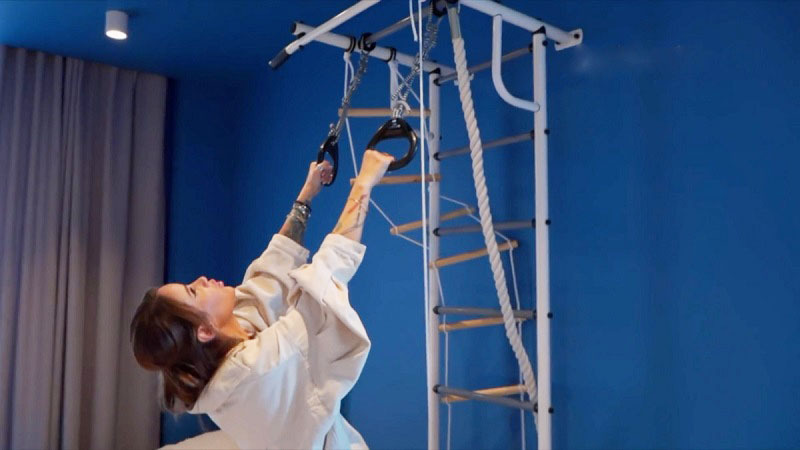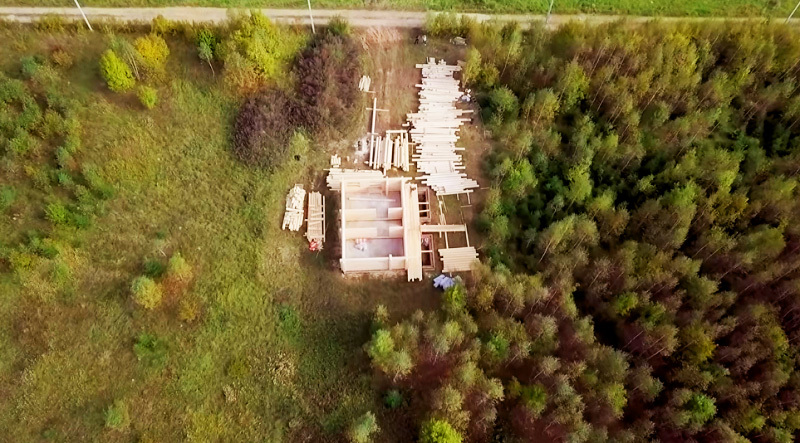Despite the rapid development of technology frame construction, Stone houses still as popular as ever. This house is not just faithfully serve your family for decades, but will remain as a legacy to your children and grandchildren. Of building materials blocks - modern and qualitative element, which drastically reduce the time of construction of the building. Today, we will help you determine which is best blocks to build a house. Price, performance, application features and other important information in this material.

Read article
- 1 Building block: the type, size, price and specifications
- 1.1 What are the best blocks for the construction of the house: the price of products
- 2 We compare: from what blocks to build a better house
- 3 What else influences the choice of building blocks for external walls
- 4 Pros and cons of foam blocks for the construction of residential buildings
- 5 Recommendations professionals for construction of the blocks
- 6 House of blocks: quickly and accurately
Building block: the type, size, price and specifications
The unit has a large size and high strength. At the same time it should not weigh too much. These basic requirements to the material dictate the technological features of its production.

The blocks can be divided into types of vehicle and the material used for the filler cords. So, from what makes this building material:
- foam;
- slag concrete;
- expanded clay;
- gas silicate;
- concrete;
- arbolit;
- ceramics;
- polystyrene;
- opilkobeton.
In most cases, the filler cement binder mixture used. Special technology allows the porous concrete.

Consider the types, characteristics of the building blocks of more:
| Types units / Image | Description |
 | This heavy elements made of grout and gravel. For the strength of such constructions are reinforced with metal. Stacking elements is made by means of lifting equipment. The minimum weight per unit - fifteen kilograms. Such a building material mainly used for the formation of foundation and the construction of external walls in high-rise structures. |
 | The basis of building elements - a mix of cementIn paste form lime and aluminum. Harden gas silicate blocks in the autoclave. The result is a material with a porous structure. After curing the blocks are cut using a special mechanism with cutting strings on geometrically regular fragments. Building a house of silicate blocks - one of the most popular options. These houses are typical white walls, which are not necessarily plaster. Among other things, foam is easily cut by hand and processed. Because it is possible to produce structures of complex shape. Standard size gazoblokov to build a house - 60h20h25 see. |
 | cinder blocks form using vibropressovalnoy machines. The filler used blast-furnace slag or waste coal-fired boiler, brick fight and chippings. This building material used for the construction of industrial buildings and business buildings. It is not recommended to use cinder blocks for construction apartment building. Their components can adversely affect the health of people living in the house. |
 | Foam is formed without exposure to steam and temperature. Its special whisk mixer and poured into molds size 20h30h60 cm. Foam gradually solidifies at natural temperature. This building material has good thermal and soundproofed. |
 | The building material perfectly combines all the positive qualities of natural wood cement and strength characteristics. Wood makes a vapor-permeable material, and concrete - Fire resistance. His only negative - the sensitivity to moisture. The walls of such a material must also be protected from contact with atmospheric moisture. |
 | Produced as cinder blocks, using vibropressovalnogo mechanism but is used as a filler clay granules foam, burnt in a special oven. This product can be used for construction of houses. It is environmentally friendly and has a high strength. Modern technologies allow to create expanded clay polystyrene blocks with insulation and facing of artificial stone. The walls of such construction materials do not need further warm or process. If desired, it is possible to pick up coating imitation brick, Natural stone or tiles. |
 | As a part of these elements has a polystyrene and concrete base. The material has high insulating properties and good durability. Its drawback is shrinkage under high load. So that the polymer blocks are more commonly used as a heater and partition elements, but not as the main material for the walls. |
 | This building material comprises ninety percent of wood chips, cemented cement mixture. To improve the adhesion of materials in the manufacture of wood-concrete blocks using hydrated lime and aluminum sulfate. Arbolita properties match the properties of wood, but the material is non-flammable and does not rot. The only thing "lame" this view - excessive absorption lag. During the construction of houses made of wood-concrete blocks required Front assembly steamtight plaster. |
 | For the manufacture of building elements clay mixed with fine sawdust. In an oven under high temperature burnt sawdust, and clay acquires a porous structure. Standard sizes keramoblokov 38h24.8h23.8 see. The pros and cons keramoblokov consist in maintaining good heat and high strength, but brittle structure and a high absorption of moisture. |
Related article:
How to choose the right concrete blocks. The review will consider the characteristics, properties, advantages, the secrets of proper selection and the average cost of building materials, as well as practical recommendations for its implementation.
What are the best blocks for the construction of the house: the price of products
In deciding what is best blocks for the construction of the house, the price is not the final value. The cost of various types of building materials depends on the region, the average price in rubles for one element of the standard sizes:
- Concrete blocks - 110
- Aerocrete - 130
- Arbolit - 120
- Keramobloki - 100
- Concrete block - 53
- Polymer - 110
- Opilkobloki - 50
- Cinder blocks - 50
We compare: from what blocks to build a better house
Note the comparison table wall materials.

Cost per square meter of wall made of different materials have minor differences, but the construction time significantly different from each other. Considered the strongest walls of silicate, but keramobloki are not inferior in the resistance to compression. The lightest of the following - aerated concrete elementsBut one can not build a building higher than two or three floors. The ideal ratio of strength and density show keramobloki. They do not require massive foundation and thus able to withstand the concrete inner lining overlap.
The best heat insulation - the aerated. Keramobloki in this indicator occupy the second place.

By all indications the leader knocked aerated. What is the best material for the construction of the house - you decide. But it is necessary to take into account additional factors that influence the choice.
What else influences the choice of building blocks for external walls
It is necessary to consider not only the technical characteristics of the building material, but also the specifics of the future structure:
- For energy-saving design with good thermal insulation required aerocrete.
- building with two or three floors a heavy roof must be built of strong material - ceramic blocks and brick.
- When choosing a building material plays an important role of its availability. Agree, it makes no sense to choose the units if the cost of transportation will double their price.

Important! It is not often you can find houses built out of one type of building material. An ideal variant is considered to be a combination of different materials depending on the particular design. For example, for a two-storey house rational use keramoblok for construction of the first floor and foam or arbolita - for the second.
Pros and cons of foam blocks for the construction of residential buildings
Foam concrete and aerocrete - leaders in popularity among individual housing developers. If your choice has fallen on the building material, it is necessary to clarify all eggo advantages and disadvantages.
Advantages:
- The material is eco-friendly and provides a comfortable home for a man microclimate.
- foam cost in comparison with other types of blocks.
- Lightweight material that requires no massive foundation.
- The rate of housing construction of foam blocks - up to three months.
- Excellent heat and sound insulation properties.
- Fire safety.
- Ability to furnish any material.

Disadvantages:
- Easily damaged by careless transport.
- It can crack with a sharp change in temperature after the stacking.
- It requires reinforcement and exterior trim.
Recommendations professionals for construction of the blocks
- For storage and transportation of material should be protected from moisture using a polyethylene film.
- Blocks are transported on special pallets. That the material is not shifted during shipment, it is fixed by slings.
- Building block of material is conducted at ambient temperature for not less than five degrees centigrade.

- Aerocrete can be cut normal Hand hacksaw. band saw used when the scope of work is very large.
- For precision cutting of foam concrete building material used by the construction area.
- Glue is applied on the joints with a trowel with teeth.
- The elements are fitted and sit down with a rubber hammer.
- in the regeneration foundation should not forget blind area. Are allotted it by the block walls excess moisture.
- In order to strengthen the walls of aerated concrete, should be used reinforcing materials on the perimeter. It is especially important to use this technique in the construction of a multistory building.

- Overlap in the house of the blocks can be made from wood or concrete. Good results are obtained by combining materials.
Related article:
Table of thermal conductivity of building materials.From high-quality selection of necessary materials directly dependent thermal resistance of your home. To help you, given a detailed table of the thermal conductivity of building materials, as described in this article.
House of blocks: quickly and accurately
So, we conducted an analysis of which blocks are better for building houses. The price of different types of blocks has no significant difference, but the specifications and features of the application dictate the choice of the buyer. The optimal solution is the combination of different kinds of building materials in the construction of the building. So it is possible to achieve the necessary strength, lightness and cheapness of construction. Their common advantage - speed of construction.






